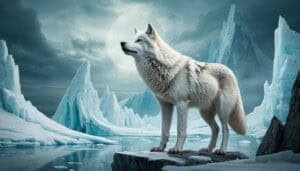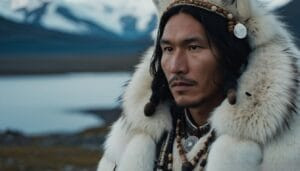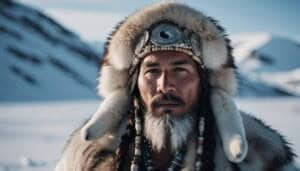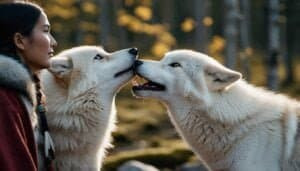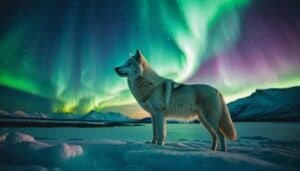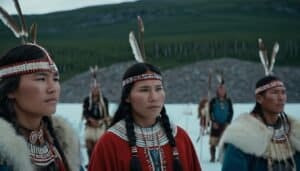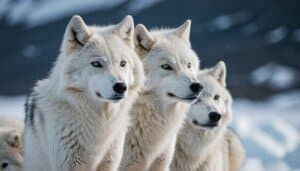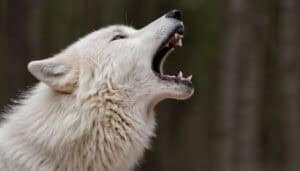Introduction
Arctic wolves hold a special place in the cultural and spiritual lives of Arctic communities. This article explores the multifaceted roles these majestic creatures play in Arctic dance traditions
We will delve into their cultural significance, examining how Arctic wolves are symbolized and mythologized in various Arctic cultures
Additionally, we’ll look at traditional and modern dance practices that feature Arctic wolves, uncovering the choreography, music, and ceremonial aspects that bring these animals to life in dance. Join us as we journey through the traditions that celebrate Arctic wolves, preserving their legacy through the art of dance
The Cultural Significance of Arctic Wolves
Arctic wolves, known scientifically as Canis lupus arctos, are revered and respected creatures within Arctic cultures. Their significance transcends mere existence in the wild, as they embody a range of symbolic meanings and are deeply embedded in the myths and stories of these communities
Symbolism of Arctic Wolves in Arctic Cultures
In Arctic cultures, the Arctic wolf often symbolizes strength, endurance, and survival, which are essential traits for life in the harsh Arctic environment
The wolf’s ability to navigate and thrive in the icy wilderness resonates with the Indigenous peoples’ own experiences and challenges. This deep connection with the Arctic wolf is reflected in various cultural practices, including dance
Wolves are seen as wise and powerful animals, often believed to be spiritual guides or protectors. Their presence in stories and legends serves as a reminder of the interconnectedness of all living beings and the environment. For example, the Inuit and other Arctic peoples might view the wolf as a teacher or an ancestor spirit, offering guidance and wisdom through its actions and behavior
In many Arctic communities, the Arctic wolf is also a symbol of community and teamwork. Wolves live and hunt in packs, exhibiting cooperation and mutual support, qualities that are highly valued in Arctic societies
This symbolism is often incorporated into dances, where the movements and formations can represent the unity and cooperation of the community
Myths and Stories Involving Arctic Wolves
Arctic wolves feature prominently in the mythology of Arctic peoples. These stories often highlight the wolf’s role as a revered and mystical figure. One such story is the Inuit legend of Amarok, a giant wolf that hunts alone and is a powerful spirit. Amarok is believed to be a protector of the wilderness, and encountering this spirit is seen as a sign of great importance
Another common motif in Arctic mythology is the transformation between humans and wolves. Some legends speak of shamans who can transform into wolves to gain their strength and abilities. These shapeshifting stories emphasize the close relationship between humans and wolves and the belief in shared qualities and traits
These myths and stories are not merely tales of the past but are actively preserved and passed down through generations. They are often told through dance, where the movements and expressions of the dancers bring the stories to life
The dancers, embodying the wolves, convey the essence of the myths, allowing the audience to connect with the cultural heritage and the powerful symbolism of the Arctic wolf
Arctic Wolves in Traditional and Modern Dances
Arctic dances, both traditional and modern, often incorporate elements that reflect the cultural significance of the Arctic wolf
These dances serve as a medium to convey stories, celebrate heritage, and express communal values. The presence of the Arctic wolf in these dances underscores its symbolic importance and the deep connection Arctic peoples have with this majestic animal
Examples of Dances Featuring Arctic Wolves
Several traditional Arctic dances feature Arctic wolves prominently. For example, the Inuit perform the “Wolf Dance,” which depicts the hunting prowess and the social structure of the wolf pack
Dancers mimic the movements of wolves, showcasing their agility, coordination, and strength. This dance is often performed during festivals and celebrations, highlighting the community’s respect for the wolf’s characteristics
Another example is the “Wolf Ceremony” of the Yupik people, where dancers wear elaborate wolf masks and costumes. This ceremony is both a spiritual and cultural expression, aimed at invoking the spirit of the wolf and seeking its guidance and protection. The dance involves rhythmic movements and chants that narrate the stories of wolves and their interactions with humans
In modern times, Arctic dance troupes have incorporated contemporary elements into traditional wolf dances. These adaptations often blend classical dance forms with traditional steps, creating a fusion that appeals to a broader audience while still honoring cultural traditions
For instance, contemporary performances might include modern music and innovative choreography while maintaining the symbolic gestures and narratives associated with the Arctic wolf
Choreographic Elements Inspired by Arctic Wolves
The choreography of dances featuring Arctic wolves is meticulously designed to emulate the behaviors and traits of the animal. Dancers often adopt low, prowling stances to mimic the hunting posture of wolves
Movements are fluid and dynamic, reflecting the wolf’s grace and power. Group formations in these dances are carefully crafted to resemble a wolf pack, emphasizing unity and teamwork
Key elements include synchronized steps that represent the coordinated efforts of a wolf pack during a hunt. Solo performances within the dance might highlight the lone wolf’s journey, symbolizing independence and resilience. The use of space on the stage is also significant, with dancers moving in patterns that mimic the territorial behavior of wolves
Costumes play a crucial role in these dances. Traditional attire might include fur cloaks and masks that resemble wolf features, enhancing the visual impact and authenticity of the performance
In modern interpretations, costumes may blend traditional designs with contemporary materials, offering a fresh yet respectful take on the cultural attire
Evolution of Arctic Wolf Symbolism in Modern Dances
As Arctic cultures evolve, so too do their dance traditions. Modern Arctic dances continue to feature Arctic wolves, but with new layers of meaning and contemporary relevance. These dances address current issues facing Arctic communities, such as climate change and cultural preservation, using the enduring symbol of the Arctic wolf to convey messages of resilience and adaptability
For example, some modern dances use the wolf as a symbol of the Arctic ecosystem, drawing attention to environmental conservation efforts
Choreography in these performances might include elements that depict the changing landscape and the challenges faced by wildlife, including wolves. This not only raises awareness but also strengthens the cultural identity and unity of the community
Moreover, modern dances often involve collaborations with artists from other cultures, leading to a rich exchange of ideas and styles. These collaborations can introduce new interpretations of the Arctic wolf, blending traditional symbolism with global perspectives. Such fusion enhances the cultural dialogue and ensures that the significance of the Arctic wolf remains vibrant and relevant in contemporary times
Ceremonial Practices Involving Arctic Wolves
Ceremonial practices in Arctic cultures often integrate Arctic wolves to honor their spiritual and cultural significance. These ceremonies are essential for preserving traditions, connecting communities, and passing down stories from generation to generation
Ceremonies Highlighting Arctic Wolves in Dance
Arctic wolf-themed ceremonies are profound cultural expressions that blend spirituality, storytelling, and communal identity
One prominent example is the Inuit “Wolf Spirit Ceremony,” which is performed to invoke the spirit of the wolf for guidance and protection. During this ceremony, participants don wolf masks and engage in ritualistic dance movements that are believed to attract the spiritual presence of the wolf
In the Chukchi culture, the “Wolf Totem Dance” is performed during significant communal events such as weddings or seasonal festivals. This dance is intended to celebrate the traits of the wolf, such as loyalty, strength, and resilience. Dancers form circles and move in coordinated patterns, symbolizing the unity and collective strength of the community, much like a wolf pack
Another important ceremony is the “Wolf Ancestral Dance” among the Athabaskan people. This dance pays homage to the ancestral spirits believed to inhabit the Arctic wolves. Participants often paint their faces and bodies with traditional symbols and wear wolf pelts
The dance is accompanied by drumming and chanting, which are integral to creating a spiritual atmosphere that honors the ancestors and their connection to the wolf
These ceremonial dances are not just performances but are considered sacred acts that reinforce cultural values and spiritual beliefs. They are typically accompanied by storytelling sessions where elders share myths and legends about the Arctic wolf, further embedding the animal’s significance in the community’s cultural fabric
Conclusion
Arctic wolves play a vital role in the dance traditions and ceremonial practices of Arctic cultures. They symbolize strength, unity, and spiritual guidance, which are essential aspects of life in the harsh Arctic environment
Through traditional and modern dances, the significance of the Arctic wolf is celebrated and preserved, ensuring that the cultural heritage and communal values continue to thrive. These dances and ceremonies are not only artistic expressions but also sacred practices that connect communities with their history, environment, and spirituality. By honoring the Arctic wolf, Arctic cultures maintain a deep, enduring connection with their past, present, and future



